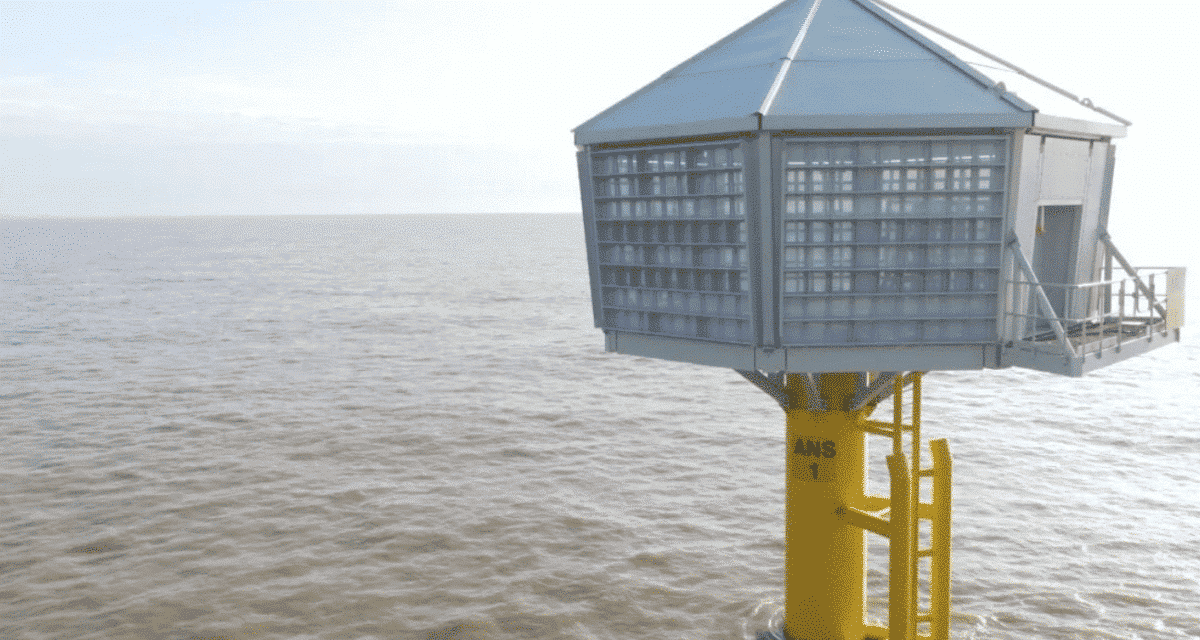In a groundbreaking initiative that sets a new standard for ecological responsibility, the Danish wind giant Ørsted has accomplished an extraordinary feat in the realm of renewable energy. They’ve completed the construction of three massive artificial nests, specifically designed to provide shelter for a vulnerable seabird species off England’s East coast. This project promises to be a game-changer, not only in green energy but also in wildlife conservation efforts.
Hornsea 3: A Remarkable Offshore Wind Farm
Hornsea 3 is no ordinary offshore wind farm. With a colossal capacity of 2.85 gigawatts, it is poised to become a pivotal player in the renewable energy landscape. Nestled approximately 75 miles from Norfolk and 99 miles from Yorkshire, this mammoth project is on track for completion by 2025. Once operational, it will have the remarkable ability to power over 3 million households. A moment in the harmonious coexistence of renewable energy and nature.
The Vital Role of Ecological Compensation
For Hornsea 3, Ørsted undertook a commitment to accommodate the Black-legged kittiwake, a seabird species facing critical endangerment. The decline in kittiwake populations is attributed to factors such as food shortages and the impact of climate change. Unlike their more boisterous seagull counterparts, kittiwakes are dainty, subsisting solely on marine fish and small crustaceans. They are not scavengers raiding garbage cans or swooping down on unsuspecting people in search of food.
Eleni Antoniou, the environmental manager at Ørsted, emphasized the critical role of this initiative, stating, Kittiwake are listed as at risk from extinction. A move towards a green energy system could help considerably in the long-term conservation of the species. In the meantime, the provision of these structures will provide a safe, nesting space to enable future generations to raise young away from predators and out of town centers.

The Engineering Marvel: Nearshore Artificial Nesting Structures
Ørsted collaborated with UK marine contractor Red7Marine to construct these colossal artificial bird nests. These ingenious avian habitats are situated off the coast of Suffolk, a region south of Norfolk and an ideal location for rapid colonization by the kittiwakes. Suffolk’s lack of natural nesting sites, such as cliffs, did not deter these resilient birds from making the area their home. Because of this, their population is steadily growing.
The giant bird nests were meticulously designed by a team of ecologists, architects, and engineers. Positioned approximately 0.6 miles offshore, each structure is supported above the water on a single monopile. Remarkably, the octagonal topside of these structures serves as a multi-functional platform. It features a space equipped with a table, chairs, and a whiteboard, allowing researchers to record essential data findings. Furthermore, two cameras are thoughtfully installed on each structure, offering an invaluable glimpse into the lives of these magnificent seabirds.
Each artificial nest boasts the remarkable capacity to house around 500 nesting spaces, thoughtfully arranged across eight rows of ledges per nesting face. These individual nesting spaces are equipped with sliding Perspex panels, enabling researchers to discreetly observe the kittiwakes from within without disturbing the birds. The design of the nests is a testament to the intricate understanding of the kittiwake’s natural habitat. Narrow ledges and vertical sides faithfully replicate the cliffs where these seabirds would typically nest. The eight-sided design provides kittiwakes with options, ensuring they can select the most suitable spot according to factors like sunlight and wind. The structure’s off-white hue seamlessly blends with the sky and sea, enhancing the aesthetic and ecological harmony of the area.
Dedicated Monitoring for Long-term Conservation
Ørsted’s commitment to the welfare of the kittiwakes doesn’t end with the construction of these remarkable structures. The Danish energy company has undertaken the responsibility of monitoring the birds for the entire lifespan of the ANS. This long-term dedication to conserve these vulnerable seabirds sets a precedent for corporate social responsibility in the renewable energy sector.
Conclusion
These artificial bird nests near the Hornsea 3 wind farm marks a pivotal moment in the history of renewable energy and wildlife conservation. Ørsted’s visionary project showcases the remarkable potential of renewable energy projects to coexist harmoniously with fragile ecosystems.
Join our Forum for free today!

- The Kleptomaniac Cat That Rules Houston - July 20, 2024
- Elephant Makes a Lifelong Friend at Sanctuary in Tennessee - July 14, 2024
- Evidence For World’s Oldest Fossilized Forest Discovered in New York - July 11, 2024

